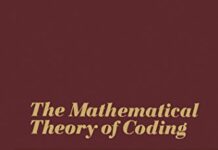
Ebook Info
- Published: 2005
- Number of pages: 298 pages
- Format: PDF
- File Size: 4.66 MB
- Authors: Ian F. Blake
Description
Since the appearance of the authors’ first volume on elliptic curve cryptography in 1999 there has been tremendous progress in the field. In some topics, particularly point counting, the progress has been spectacular. Other topics such as the Weil and Tate pairings have been applied in new and important ways to cryptographic protocols that hold great promise. Notions such as provable security, side channel analysis and the Weil descent technique have also grown in importance. This second volume addresses these advances and brings the reader up to date. Prominent contributors to the research literature in these areas have provided articles that reflect the current state of these important topics. They are divided into the areas of protocols, implementation techniques, mathematical foundations and pairing based cryptography. Each of the topics is presented in an accessible, coherent and consistent manner for a wide audience that will include mathematicians, computer scientists and engineers.
User’s Reviews
Editorial Reviews: Book Description This second volume addresses tremendous progress in elliptic curve cryptography since the first volume.
Reviews from Amazon users which were colected at the time this book was published on the website:
⭐This book gives a good summary of the current algorithms and methodologies employed in elliptic curve cryptography. The book is short (less than 200 pages), so most of the mathematical proofs of the main results are omitted. The authors instead concentrate on the mathematics needed to implement elliptic curve cryptography. The book is written for the reader with some experience in cryptography and one who has some background in the theory of elliptic curves. A reader coming to the field for the first time might find the reading difficult. The authors do give a brief summary in Chapter 1 on the idea of doing cryptography based on group theory. They then move on to discuss finite field arithmetic in Chapter 2. The reader is expected to know some of the basic notions of multiprecision arithmetic for integers. The authors choose to work with 2^16. Psuedocode is given for doing modular arithmetic with Montgomery arithmetic given special attention. The last section of the chapter gives a good summary of arithmetic in fields of characteristic 2. Chapter 3 discusses very compactly arithmetic in elliptic curves. This is where the reader should already have the background in the theory of elliptic curves, since the reading is very fast and formal. The authors do a good job of summarizing how modular polynomials come into play in elliptic curve cryptography and give some explicit examples of these polynomials. The most important chapter of the book is Chapter 4, where the authors give a discussion of how to implement elliptic curves efficiently in cryptosystems. This chapter is nicely written and pseudocode appears many times with lots of nice examples. This chapter serves as background for the next one on the discrete logarithm problem using elliptic curves over finite fields. The MOV attack, the anomalous attack, and the baby step/giant step methods are discussed very nicely. Random methods, such as the tame and wild kangaroo are discussed at the end of the chapter. The next three chapters concentrate on how to actually generate elliptic curves for cryptosystems, with particular attention payed to the Schoof Algorithm. The chapter on Schoof’s algorithm is more detailed than the rest of the chapters and this makes for better reading. The authors do discuss how to generate curves using complex multiplication although the discussion is somewhat hurried. The next chapter discusses how elliptic curves have been applied to other areas in cryptography, such as factoring, etc. A good discussion of the ECPP algorithm on proving primality ends the chapter. The authors end the chapter with a discussion of hyperelliptic cryptography. Anyone familiar with the theory of elliptic curves and how they are applied to cryptography will naturually ask if hyperelliptic curves have any advantages over the elliptic case. The authors never really address this explicity but do give examples on just what is involved in implementing hyperelliptic curves in cryptography. Overall a fine addition to the literature on elliptic curves in cryptography. One would hope that the authors would write a follow-up book on hyperelliptic curves and maybe on general algebraic curves and their possible use in this area.
⭐First, the reviews dated below (July 25, 2002, July 29, 2000 [Lee Carlson] and January 31, 2000) are refering to Blake, Seroussi and Smart’s first book: Elliptic Curves in Cryptography: London Mathematical Society Lecture Note Series 265, not the new book Advances in Elliptic Curve Cryptography, London Mathematical Society Lecture Note Series 317.Contents of Advances in Elliptic Curve Cryptography, London Mathematical Society Lecture Note Series 317 (ISBN-10: 052160415X).Chapter I: covers Elliptic Curve Based Protocols in the IEEE 1363 standard, ECDSA (EC Digital Signature Algorithm), ECDH (EC Diffie-Hellman) /ECMQV (EC MQV protocol of Law, Menezes, QU, Solinas and Vanstone) and ECIES (EC Integrated Encryption Scheme).Chapter II: on the provable security of ECDSA.Chapter III: proofs of security for ECIES,Chapter IV: side-channel analysis.Chapter V: defenses against side-analysis.Chapter VI: advances in point counting. (This is an advanced chapter covering Takakazu Satoh’s fast p-adic algorithm. Note, a very brief introduction to p-adic fields and extensions is given at the start of this chapter.)Chapter VII: hyperelliptic curves and HCDLP.Chapter VIII: Weil descent attacks.Chapter IX: pairings.Chapter X: cryptography from pairings. (Highlight: covers Boneh and Franklin’s identity based encryption (IBE) using Weil pairings.)This book, published in April, 2005, brings the reader up to date with much of the latest research on Elliptic Curve Cryptography.The algorithms are in the same format as in Elliptic Curves in Cryptography. Also, like in their first book, this book also does not always give proofs.Highly recommended for advanced graduate students, applied mathematicians and computer scientists in the field of public key cryptography. The mathematics is more advanced than in their first book on Elliptic Curve Cryptography.
⭐
⭐
⭐
⭐
⭐
Keywords
Free Download Advances in Elliptic Curve Cryptography (London Mathematical Society Lecture Note Series, Series Number 317) 2nd Edition in PDF format
Advances in Elliptic Curve Cryptography (London Mathematical Society Lecture Note Series, Series Number 317) 2nd Edition PDF Free Download
Download Advances in Elliptic Curve Cryptography (London Mathematical Society Lecture Note Series, Series Number 317) 2nd Edition 2005 PDF Free
Advances in Elliptic Curve Cryptography (London Mathematical Society Lecture Note Series, Series Number 317) 2nd Edition 2005 PDF Free Download
Download Advances in Elliptic Curve Cryptography (London Mathematical Society Lecture Note Series, Series Number 317) 2nd Edition PDF
Free Download Ebook Advances in Elliptic Curve Cryptography (London Mathematical Society Lecture Note Series, Series Number 317) 2nd Edition

